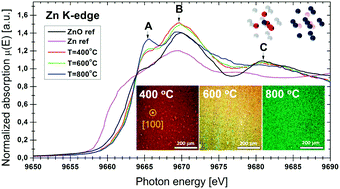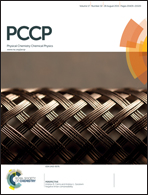Luminescence and fine structure correlation in ZnO permeated porous silicon nanocomposites
Abstract
Nanocomposites formed by porous silicon (PS) and zinc oxide (ZnO) have potential for applications in optoelectronic devices. However, understanding the distribution of both materials in the nanocomposite, and especially the fine structure of the synthesized ZnO crystals, is key for future device fabrication. This study focuses on the advanced characterization of a range of PS–ZnO nanocomposites by using photon- and ion-based techniques, such as X-ray absorption spectroscopy (XAS) and elastic backscattering spectroscopy (EBS), respectively. PS substrates formed by the electrochemical etching of p+-type Si are used as host material for the sol–gel nucleation of ZnO nanoparticles. Different properties are induced by annealing in air at temperatures ranging from 200 °C to 800 °C. Results show that wurtzite ZnO nanoparticles form only at temperatures above 200 °C, coexisting with Si quantum dots (QDs) inside a PS matrix. Increasing the annealing temperature leads to structural and distribution changes that affect the electronic and local structure of the samples changing their luminescence. Temperatures around 800 °C activate the formation of a new zinc silicate phase and transform PS into an amorphous silicon oxide (SiOx, x ≈ 2) matrix with a noticeably reduced presence of Si QDs. Thus, these changes affect dramatically the emission from these nanocomposites and their potential applications.


 Please wait while we load your content...
Please wait while we load your content...